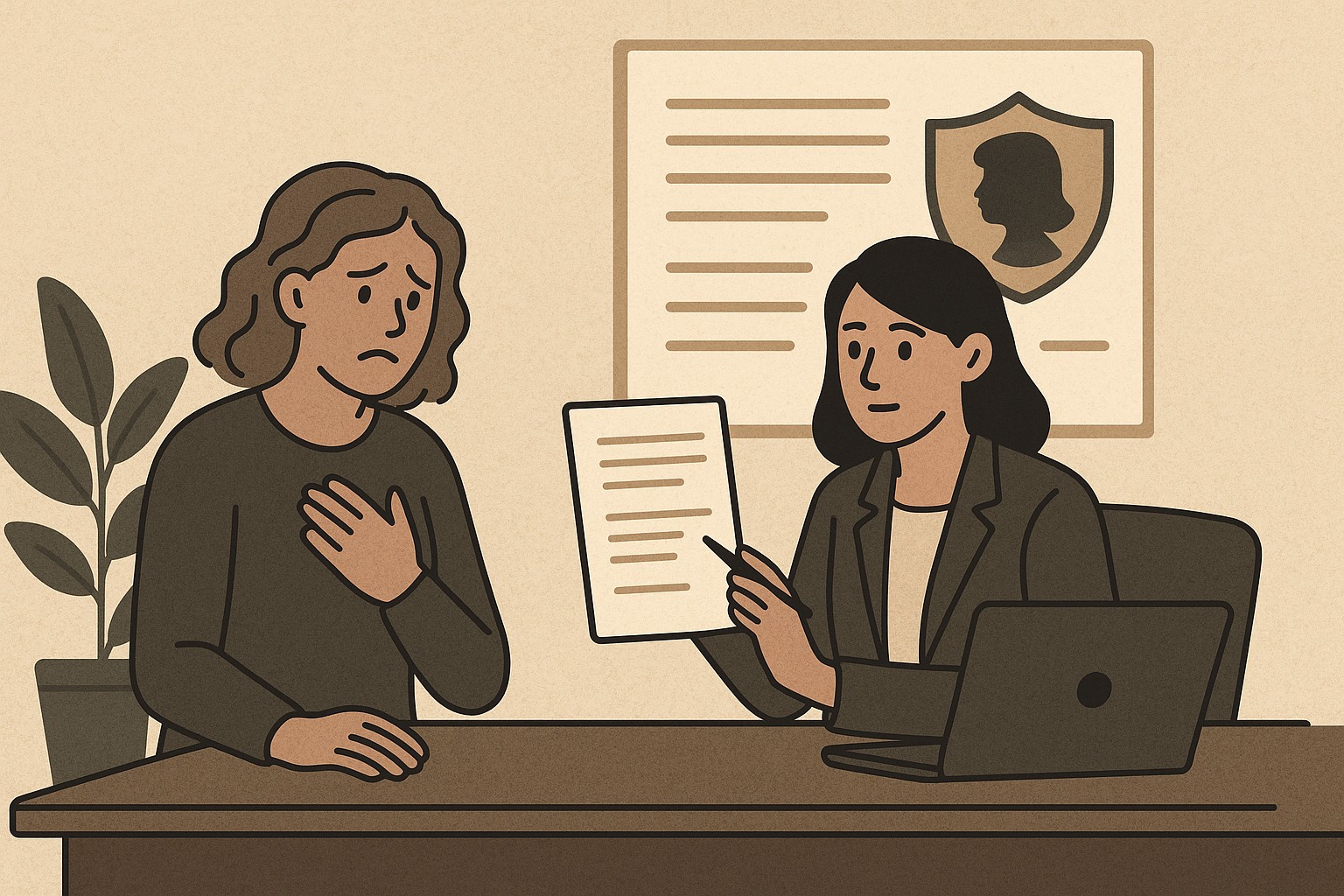How to Get Faster Legal Aid in Ontario: A Guide to the Family-Violence Authorization (A-Form)
When you're facing family violence, you need a lawyer now. Legal Aid Ontario's **Family-Violence Authorization (A-Form)** is a special, fast-tracked process to help survivors get a legal aid certificate for urgent family law matters. Our guide explains the step-by-step process, the crucial role a lawyer plays in submitting the application, and the types of supporting documents—like police occurrence numbers or letters from a shelter—that can help you qualify for immediate legal help.

When you are facing family violence, the need for legal protection is often immediate, but the cost of hiring a lawyer can be a significant barrier. As you’ve correctly identified, Legal Aid Ontario (LAO) has a specific, expedited process to address this exact problem: the Family-Violence Authorization, often referred to by lawyers as the "A-Form."
This process is designed to cut through the normal waiting periods and get a legal aid certificate into the hands of a survivor quickly, so they can get a lawyer's help to address urgent safety issues.
This guide explains what the authorization is, how the process works, and the types of proof that can help you qualify.
Understanding the Basics: Legal Aid and Certificates
Legal Aid Ontario (LAO) is a publicly funded organization that provides legal assistance to low-income Ontarians in areas like family law, criminal law, and immigration law.
A Legal Aid Certificate is the primary way they provide help for serious family law cases. It is essentially a voucher that guarantees payment to a private lawyer for a certain number of hours to represent you. The Family-Violence Authorization is the fastest way to get one of these certificates.
What is the Family-Violence Authorization (A-Form)?
The Family-Violence Authorization is an expedited application stream specifically for people who have experienced domestic violence and need immediate legal help with a family law matter.
Its purpose is to ensure a survivor can get a lawyer on board immediately to deal with urgent issues, such as:
- Getting a restraining order.
- Asking for exclusive possession of the family home.
- Resolving urgent issues of parenting time or decision-making responsibility where a child’s safety is at risk.
This authorization allows LAO to issue a certificate for an initial block of hours quickly, often bypassing some of the usual, more lengthy assessment procedures.
The Application Process: Working with Your Lawyer
While you can contact Legal Aid directly, the A-Form process is most often initiated by a lawyer on your behalf.
Step 1: Find a Lawyer Who Accepts Legal Aid Certificates
The first step is to contact a family law lawyer who is authorized to accept legal aid. You can find these lawyers through:
- The Legal Aid Ontario website's lawyer search tool.
- The Law Society of Ontario's Law Society Referral Service.
- Asking for a list at a local Family Law Information Centre (FLIC) or community legal clinic.
Step 2: Your Lawyer Assesses Your Case
During your initial consultation, the lawyer will ask you about your financial situation and the details of the family violence you have experienced. They are assessing whether your case meets the criteria for the Family-Violence Authorization.
Step 3: Your Lawyer Submits the A-Form
If the lawyer believes you qualify, they will complete and submit the application online through LAO’s secure portal for lawyers. This is the "A-Form." It is an electronic submission where your lawyer attests to LAO that you are a victim of domestic violence and require urgent legal services.
Step 4: Provide Supporting Documentation
To strengthen the application, your lawyer will submit supporting documents that provide evidence of the risk of harm. As you noted, these are crucial. They can include:
- A police occurrence number or a copy of a police report.
- A letter from a support service (e.g., a domestic violence shelter, Victim Services, a counsellor) confirming that you are a client and that they have safety-planned with you.
- A copy of a peace bond or a criminal court undertaking with a no-contact condition.
- Photos of injuries or property damage.
- A sworn affidavit (
Form 14A) from you, detailing the incidents of abuse.
Step 5: LAO Review and Approval
LAO prioritizes these applications. A decision is often made within a few business days. If approved, a certificate is issued for an initial block of hours (e.g., 6 hours), allowing your lawyer to begin work immediately on your urgent issues. As your case progresses, your lawyer can apply for additional hours if needed.
Alternative Ways to Contact Legal Aid
If you have not yet found a lawyer, you can still start the process directly:
- Call Legal Aid Ontario's toll-free number: 1-800-668-8258. Be sure to tell the representative that you are experiencing domestic violence. They will triage your call accordingly.
- Visit a Family Law Information Centre (FLIC) at your local courthouse. They can provide information and help you contact LAO.
Disclaimer: This guide provides general information and is not legal advice. Eligibility for Legal Aid depends on your specific financial situation and legal matter. The best first step is to contact Legal Aid Ontario directly or speak with a lawyer who accepts legal aid certificates.
